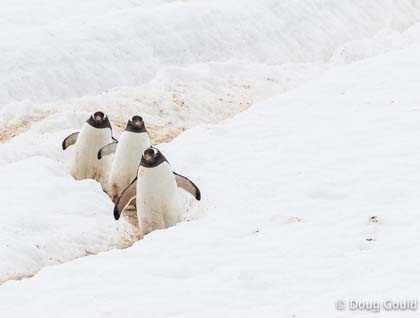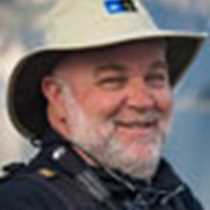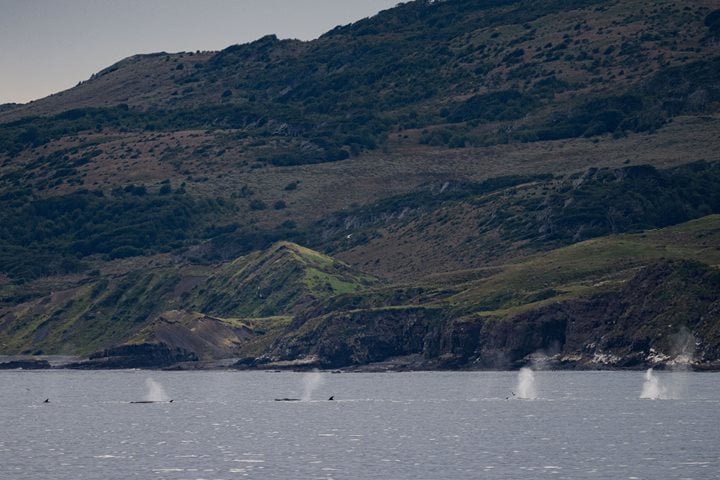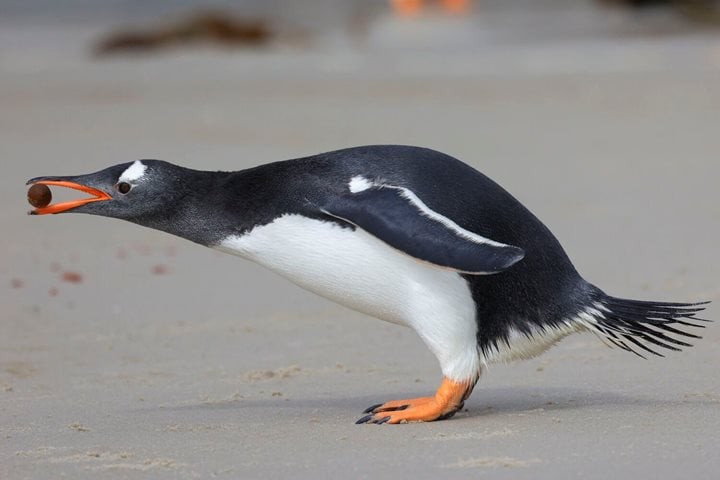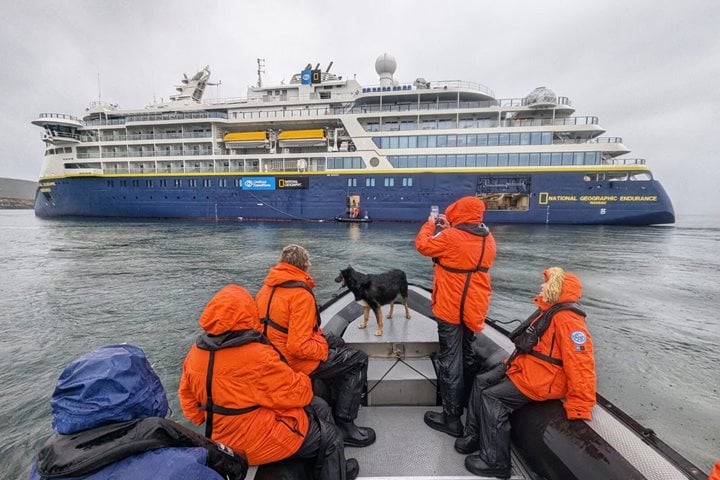A gloomy, foggy morning in the Gerlache Strait was our opening to the day. Antarctica wasn’t quite ready to show us all her colors and glory just yet, but we got a taste as we approached the first towering mountains.
We marveled at charms that we began to glimpse; icebergs and glaciers scared with deep blue gashes. Ribbons of brash ice like strings of pearls adorned the narrow neck of Andvord Bay, our destination for our first landing in Antarctica. Andvord Bay is a narrow fjord cut into the western side of the peninsula, and far inside is a small cove known as Neko Harbour.
A long, narrow beach was covered with small chunks of brash ice clinking and sloshing around in the shallow water. On the sand, hundreds of gentoo penguins have gathered in what appears to be a welcoming party for us! Soon though, we realized that the birds could care less about our presence; the penguins are here as part of their daily routine of foraging in the ocean and returning to their nest to relieve their mate in the rookery. Penguins share the nesting duties equally, and while one stays with the chicks, the other has a day to go off and find some food and spend a few hours alone, preening, bathing and fishing.
The penguins seem content to share their rookery with us, and even lead the way up a snowy hill to a high lookout, were we can look down and marvel at the view below. A massive glacier adjacent to the landing is like an iceberg factory, constantly dumping pieces of ice into the bay which drift around on the dark water like jewels in an ink pond. Those who made the hike all the way to the top can opt for a quick way down on their bums, or the more leisurely route on two feet.
During lunch, the National Geographic Orion sails a little further south, for a visit to the peninsula’s best stocked gift shop and Post Office. Just as the first Zodiacs are arriving at Port Lockroy, the winds begin to pick up. The tiny island where Base A is located is quite obviously owned by the local penguins, but they are good hosts, doing their best to utilize the human structures to their advantage to find protection for the choice nesting areas.
As the captain has decided to stay in the relative protection of Port Lockroy for the evening, we invited the staff from the base to join us for dinner on board.

